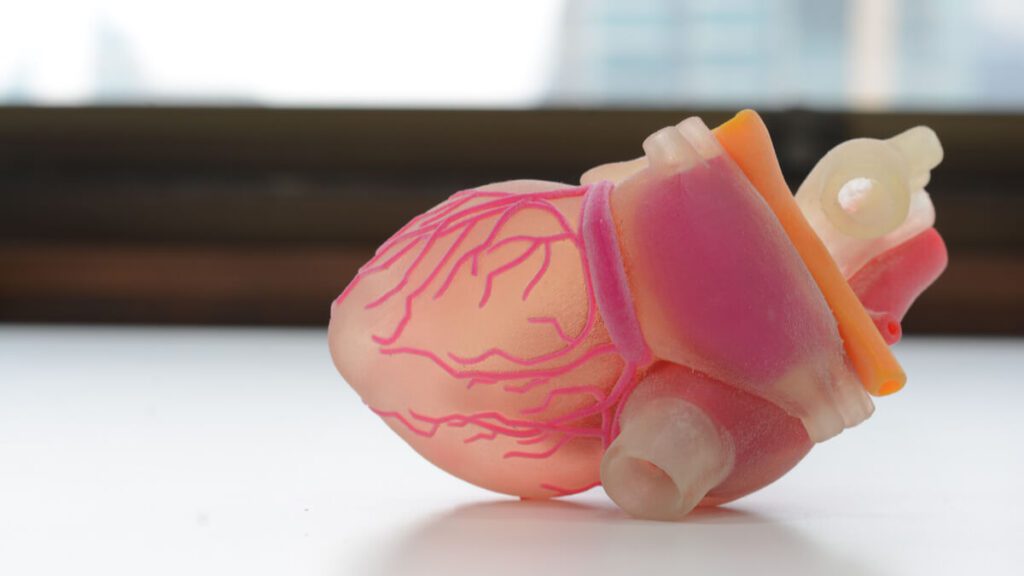
The COVID-19 pandemic has placed the healthcare industry into the limelight, as investments from all sorts of industries have been pouring in since last year.
However, one form of investment has been making strides with many in the field: 3D printing and bioprinting.
According to a report by Research and Markets, the global 3D Printing Healthcare Market generated $972.6 million in 2018 and is expected to generate $3.69 billion by 2026, registering a CAGR of 18.2 percent from 2019 to 2027.
Medical 3D printing is being widely used to manufacture medical devices such as prosthetic limbs, orthopedic and dental implants, surgical instruments, precision and personalized pharmaceuticals, and medical education models.
The report highlighted that 3D printing of personalized drugs has the potential to revolutionize the pharmaceutical market; these drugs can be adapted to specific patient requirements, such as age, weight, and comorbidities.
“This ability to print therapies on demand not only has the potential to make medicine personal to patients, but would equally save millions in costs, resources, and waste,” the report explained.
In parallel, 3D bioprinting is used at a more innovative manner by attempting to creating living human cells or tissue for regenerative medicine and engineering. This technology has the potential to fill the gaps in the medical profession such as functional organ replacement, and drug discovery.
According to the report, the growing aging population has driven the demand for donor organs, while regenerative medicine using bioprinters, patient-derived stem cells allow for personalized treatment of certain diseases.
“Use of bioprinted human tissue in drug discovery allows for quicker and more efficient processes, with better outcomes compared to using animal tissue. It also removes the need for animal testing, both in drug and cosmetic development,” Research and Markets noted.
It comes as no surprise that the proliferation of the global pandemic has enormously hampered global healthcare systems, who are in need vital medical equipment and supplies.
Which is why the 3D printing community – from major manufacturers to start-ups and individuals – has taken up the call to support frontline health workers by pledging to support the production of critical medical equipment such as ventilators and personal protective equipment (PPE) for hospitals tackling the pandemic, Research and Markets said.
An example of this can be seen through a recent partnership made by India-based Apollo Hospitals Group and Anatomiz3D to Hospital 3D-printing labs within the country, for 3D printed implants, that would enable doctors to visualize and print implants for complicated cases.
In a joint statement, both companies highlighted that the labs would provide medical 3D printing services for better healthcare, through creation of anatomical models for pre-surgical planning and education, patient-specific cutting and drilling guides, and customized implants and implant molds.
“3D-printing technology is transforming the medical environment, providing a fast, accurate and economical solution to take medical care to the next level. As healthcare evolves, 3D-printing will play an important part,” said Prathap C Reddy, chairman of Apollo Hospitals Group who along with top executives of the healthcare major and Anatomiz3D, spoke to the media virtually on Wednesday.
The statement highlighted that advances in 3D printing technology today produces customized, lighter, stronger, safer, and higher performing products with reduced lead times and lower costs. “Patient-specific design of implantable devices and surgical tools would help optimize surgical processes and costs,” it added.
Both companies explained that a multi-disciplinary team consisting of biomedical, mechanical and AM engineers as well as 3D designers will work with Apollo Hospitals medical and surgical team in the Hospital 3D-printing labs.
The lab will provide anatomical models that are life-size replicas of a patient’s anatomy, accurately reconstructed from their CT/MRI scans into 3D models, which can be created in multiple materials, colors, opacities, and hardness to provide advanced 3D visualization for pre-surgical planning and patient communication, the statement said.